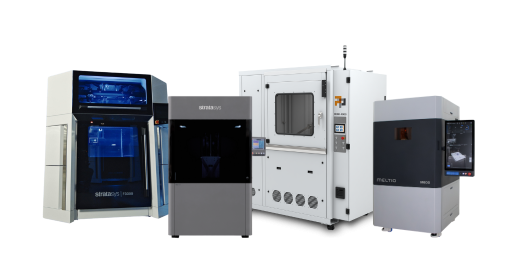3D printers
High quality 3D printers

After the actual printing process is finished, one or more post-processing steps must be carried out on the vast majority of components in order to improve certain properties, for example, optical, haptic or mechanical, of the components.
The respective post-processing steps can usually be carried out both by hand and with machine support. However, in the industrial sector in particular, mechanical solutions are used almost exclusively, since manual post-processing of the components not only takes much longer, but depending on the geometry of the component, is even impossible.
The post-processing method must always be tailored to the respective printing medium, the printing process and the component geometry to ensure that the post-processing does not damage the component and enables uniform results.

Support removal is especially important in filament and resin 3D printing, where both types require support structures to ensure dimensional stability during printing.
Depending on the support material, this removal can be done simply by hand, with a flush cutter, in a water bath or in a system specially designed for this post-processing step.
The cleaning process is necessary for all 3D printing methods except filament 3D printing in order to remove excess material, be it resin or powder, from the component.
In resin 3D printing, a solvent or water bath is used for this purpose, and in powder-based processes, the excess powder is removed either by hand or brush or by sandblasting.
Surface finishing is not an absolutely necessary process step, but it can be used with all types of 3D printing to optimise the surface quality of the components.
This includes a variety of methods, from grinding and smoothing to polishing and sandblasting, as well as milling and infiltration. In addition to conventional solutions, there are also some systems specially designed for 3D printing.
The post-curing process step is required for the vast majority of resin-based printing processes, with the only exception being the PolyJet™ process, in order to improve the mechanical properties of the component.
This post-processing step requires special equipment that uses powerful UV lamps to fully cure the component in a very short time, usually in under five minutes.

Another optional step in the post-processing routine is coloring the components. This step is, however, used very frequently.
The two most common forms for this step are dyeing and painting, whereby the final choice depends on the 3D printing process used. There are also specialized 3D printing machines that take over this process step.
Powder preparation is of the utmost importance in all powder-based processes, as this step allows unused powder previously removed from the component to be reused with a lower refresh rate.
Various tools such as suction systems, sieves and much more are used for powder preparation, some of which are also available as all-in-one solutions for additive manufacturing.
Our team of experts will be happy to support you with your project. Our specialists can not only support you in selecting the right 3D printing technology, but also take over the selection and implementation of the post-processing.
Our application team can advise you on the selection and validation of post-processing steps. Among other things, we can provide cost and time calculations as well as sample parts. In our showroom we have the possibility to validate the whole project together with you!
